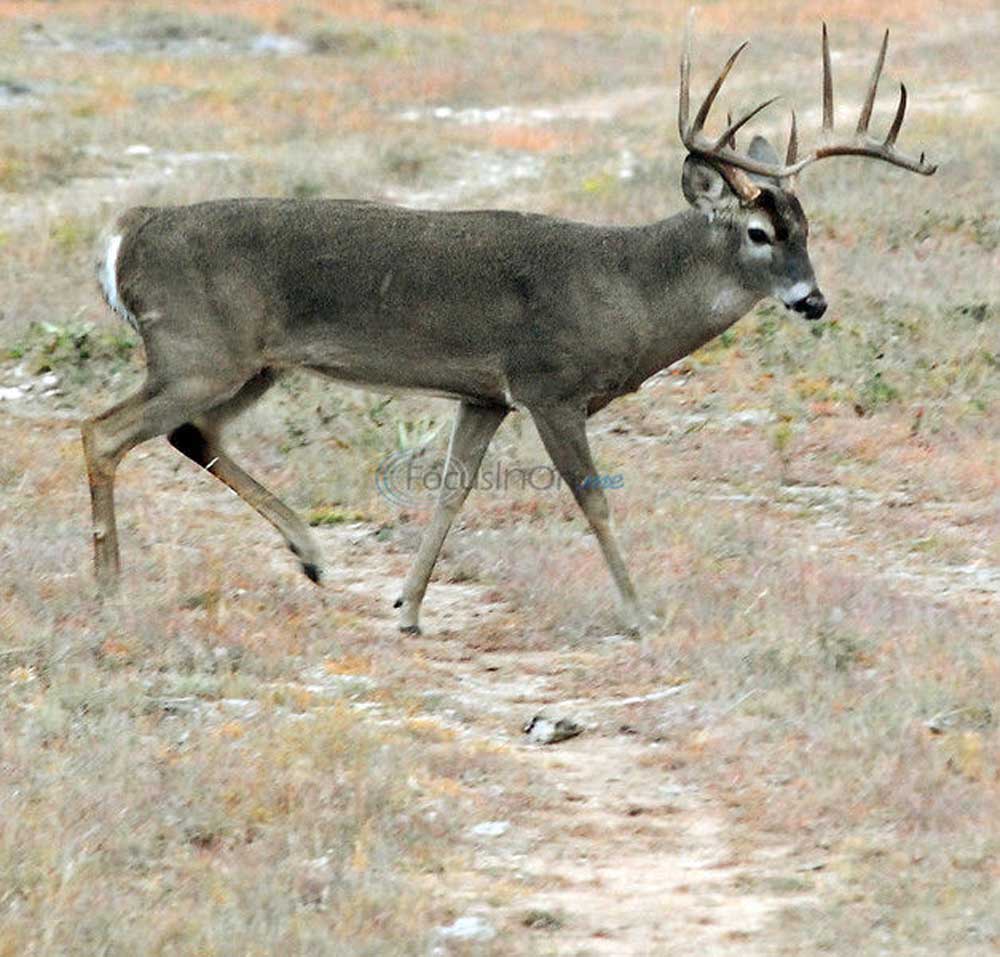Nothing But Air: Scoring System Gives Deer Credit Where Credit Isn’t Due
Published 10:07 pm Saturday, November 2, 2013

- Steve Knight/Staff When it comes to scoring trophy white-tailed deer the Boone & Crockett scoring system gives credit for nothing but air on its inside spread score.
I have a bone to pick with the Boone & Crockett Club.
Actually it is not bone as in antler, one of the fastest growing bones known, but more like the air that is between them.
It is time that deer quit getting credit for nothing, or in the case of the B&C Club the inside spread score.
OK, I realize I am trying to get water to run uphill through the Rocky Mountains, but for the life of me I can’t understand why in the early 1900s the B&C founders decided that for a measurement of antlers they would include something that isn’t antlers.
The argument is simple to understand. Years ago Tyler hunter Earl Drott shot an 11-point buck in South Texas that scored 148 2/8s. The buck had plenty of long tines, but only an 11-inch inside spread. Had that buck had a nine more inches of air between antlers it would have scored in the upper 150s and everyone would have oohed and awed at it even though it would have had the same amount of antler growth.
Jeff Gunnels, a Texas Parks and Wildlife Department wildlife biologist and B&C scorer, said he isn’t certain why the organization included the spread measurement. His speculation has to do with their vision of the perfect set of deer antlers.
“Everything in B&C was to penalize deer that did not have the normal (antler) formation. It was designed to reward symmetry. They wanted a perfectly symmetrical animal,” Gunnels speculated.
That may explain the deduction for spread being greater than main beam length.
The scoring system also doesn’t seem fair when considering a net score. Why shouldn’t a deer get credit for every inch of antler grown instead of deducting for the lack of symmetry?
I see the need for separating typical bucks and non-typicals, but why the penalty if the two antlers aren’t mirror images of one another.
Although he likes the system, Gunnels admits there is very little in nature that is symmetrical or even straight.
That of course leads to the non-typical side of the score book, which recognizes non-symmetry, but only to a point. Gunnels said the club and its scorers really dislike freak-antlered deer, which in most cases are the result of injury or disease.
“It was never designed for these freak deer,”
Right or wrong the B&C system remains the gold standard for scoring deer. Even Pope & Young, the book specifically for bow hunters, has borrowed the club’s scoring system.
While figuring in deductions for scoring trophies, Gunnels said as a biologist he just deals with gross scores. He said when developing long-term trends it gives biologists the truest measurement of antler growth.
“If measuring for management I would just worry about gross scores. I think most managers do when looking at age weight and growth data,” he said.
That is also the best route for hunters who are either maintaining harvest records on their lease or just scoring along at home for fun.
Hunters can download score sheets or use an online tabulator from B&C to score their deer. Gunnels said the tabulator is a good idea since one of the most common mistakes he finds when scoring behind a hunter is math mistakes.
Of course B&C doesn’t make it easy for beginners asking for measurements of the widest outside spread and main beam tips to tips, neither of which are included in the final score.
He said the second biggest mistake is getting a correct measurement on main beams followed by getting tine lengths correct and measuring the smallest circumference between tines and not the greatest.
Gunnels suggest the best way to determine where a tine starts growing off a main beam is to back away from the antlers a couple of feet and study them. It normally becomes apparent what is main beam and what is tine.
Gunnels said to get the most accurate score a hunter needs a cable to measure from point to point. Bar that, they should at least have a tape measure that is a quarter-inch wide and includes measurements in eighths.
For an online calculator, go to http://www.boone-crockett.org/bgRecords/bc_scoring_typwhitetail.asp?area=bgRecords&type=Typical+Whitetail+Deer.
Have a comment or opinion on this story? Contact outdoor writer Steve Knight by email at outdoor@tylerpaper.com. Follow Steve Knight on Facebook at TylerPaper Outdoors and on Twitter @tyleroutdoor.






